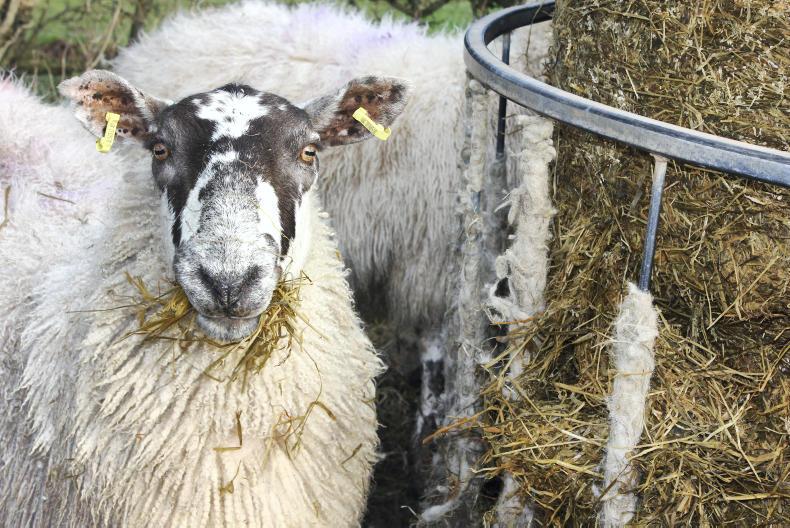Five samples of silage made at various points during 2017 were recently sent for analysis and, as expected, the results show a fair degree of variation.
At one end of the scale is a batch of bales (cut on 6 May) with a dry matter of 37% and an intake potential of 114. For anyone not familiar with the AFBI Hillsborough Feeding Information System (HFIS), these numbers will be mumbo jumbo, but regular users will appreciate the high nutritional value of this material.
At the other end, the clamped grass suffered from being ensiled during showery weather, and the 71 D value (ME 11.3) was largely negated by a dry matter figure of only 18.6%.
To translate this into practical terms, if pregnant sheep were offered this silage, then a twin-bearing ewe would need meal fed from six weeks before lambing, rising to 0.75kg two weeks before giving birth.
On the other hand, the best material should delay concentrate feeding until three or four weeks off lambing, and this peaks at only 0.4kg.
In truth, I tend to feed a bit less than the low-quality recommendations, and a bit more than the advice for the best silage.
Experience has taught me to be wary of high-quality baled grass and, in the past, I have found that young sheep can easily lose body condition if the recommendations are strictly adhered to.
I suspect this has more to do with individual ewe appetite, and isn’t necessarily a reflection of any inaccuracy on the part of the analysis.
Most important
Palatability remains my most important criteria, and while the intake figure is a strong indicator, I always balance this against a proper taste test.
There are a couple of ways this can be carried out. One is to offer a bale to sheep in late autumn, just at that stage when grass is beginning to become scarce. If the bale isn’t sweet and flavoursome, they will ignore it until they are properly hungry. On the other hand, a well-fermented and tasty bale will be devoured even when grass is still available.
The other test is undertaken with cattle, and simply involves lining up silages from different sources, and watching which one they eat first.
Assuming all samples have a decent fermentation, then the general rule seems to point towards dryer material being preferentially consumed.
Obviously, this is for a range of grass that is broadly similar in growth stage, and not silage that is as hard as nails, which tends to significantly reduce its attractiveness. However, despite trying to stay well away from fully headed grass, I would prefer low-quality, stemmy silage, to leafy grass with a poor fermentation. Opening bales of sour silage, and watching ewes sniff around for a sweet bite, is one of those hugely dispiriting farming experiences.
Dry matter
After studying the various results, one aspect of the system seems to be more important than ever: dry matter. For example, the clamp silage has an ME of 11.3, but dry matter is only 18.6%.
Beside the silo are 30 bales that were made from grass that was beginning to shoot, and the ME is (as expected) only 10.4. However, the relatively high dry matter (27.3%) means that it has a slightly higher predicted intake value, and this would appear to be borne out when I tried the taste test with the cattle. I suppose the true indicator is the weighbridge, and in the case of pregnant sheep, regular handling for body condition.
Claim
Despite two of my five samples being as good as I’ve ever made, there is (as always) a small issue that stops me from being able to claim that I make high-quality silage.
Both batches were from small areas, and the further the other samples slid down the quality scale, the bigger the acreage in question.
On top of that, the very best bales were stored in an unused area of woodland that the dairy-bred calves broke into during November, and this meant having to feed the ripped bales to these young cattle instead of keeping them for heavily pregnant sheep.
Some of these years I may succeed in making a whole range of high-quality silage, and if this happens, I intend telling the entire world about it.






 This is a subscriber-only article
This is a subscriber-only article










SHARING OPTIONS: